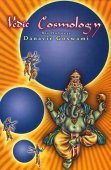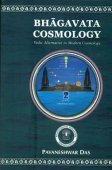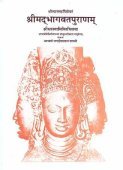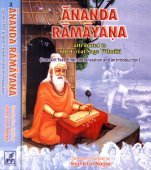Bharatavarsha, Bharata-varsha, Bhāratavarṣa, Bharatavarṣa: 17 definitions
Introduction:
Bharatavarsha means something in Hinduism, Sanskrit, Jainism, Prakrit. If you want to know the exact meaning, history, etymology or English translation of this term then check out the descriptions on this page. Add your comment or reference to a book if you want to contribute to this summary article.
The Sanskrit terms Bhāratavarṣa and Bharatavarṣa can be transliterated into English as Bharatavarsa or Bharatavarsha, using the IAST transliteration scheme (?).
In Hinduism
Vaishnavism (Vaishava dharma)
Source: ISKCON Press: GlossaryBhāratavarṣa (भारतवर्ष).—A name for the earth (now for India), derived from King Bharata, a great king who was the eldest son of Lord Ṛṣabhadeva.
Source: Pure Bhakti: Brhad BhagavatamrtamBharatavarṣa (भरतवर्ष) refers to:—(or Bhārata)The ancient name for the earth planet and present Sanskrit name for India, named after Bharata Mahārāja, son of Ṛṣabhadeva. (cf. Glossary page from Śrī Bṛhad-bhāgavatāmṛta).
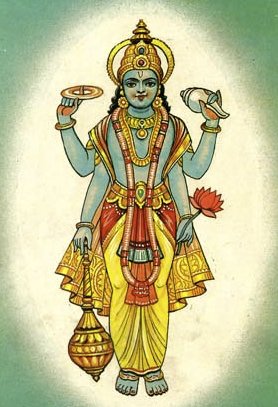
Vaishnava (वैष्णव, vaiṣṇava) or vaishnavism (vaiṣṇavism) represents a tradition of Hinduism worshipping Vishnu as the supreme Lord. Similar to the Shaktism and Shaivism traditions, Vaishnavism also developed as an individual movement, famous for its exposition of the dashavatara (‘ten avatars of Vishnu’).
Purana and Itihasa (epic history)
Source: Wisdom Library: Varāha-purāṇaBhāratavarṣa (भारतवर्ष).—Name of planet earth consisting of seven islands (dvīpas), according to the Varāhapurāṇa chapter 74. Bhāratavarṣa was once populated by the hundred sons of Sudhīmān, of whom the current human population are descendants. The ancestral lineage of Sudhīmān can be traced back to Svāyambhuva Manu, who was created by Brahmā, who was in turn created by Nārāyaṇa, the unknowable all-pervasive primordial being.
The seven islands (dvīpa) of Bhāratavarṣa are:
- Jambūdvīpa (ruled over by Āgnīdhra),
- Śākadvīpa (ruled over by Medhātithi),
- Kuśadvīpa or Plakṣadvīpa (ruled over by Vapuṣmān),
- Krauñcadvīpa (ruled over by Jyotiṣmān),
- Śālamalidvīpa (ruled over by Dyutimān),
- Gomedadvīpa (ruled over by Havya),
- Puṣkaradvīpa (ruled over by Savana).
Bhāratavarṣa (भारतवर्ष) is one of the nine divisions of the earth as separated off by certain mountain ranges, the other eight divisions being Kuru, Hiraṇmaya, Ramyaka, Ilāvṛta, Hari, Ketumāla, Bhadrāśva and Kinnara. It is surrounded by oceans in the south west and east and by the Himālaya in the North. Skanda-purāṇa VII.1.11.13. Bharata who gave his name to this country was the descendant of Svāyambhuva Manu. He was a king of Agnīdhra’s family.
According to the Śivapurāṇa 1.12, “if a man dies anywhere in the Bhāratavarṣa he shall be reborn again as a man if he has resided in a holy centre where there is a self-risen phallic emblem (liṅga) of Śiva” .
Source: Cologne Digital Sanskrit Dictionaries: The Purana IndexBhāratavarṣa (भारतवर्ष).—After king Bharata, son of Ṛṣabha; Viṣṇu in the form of Kūrma; south of the Himālayas and north of the sea;1 a Karmabhūmi;2 9000 yojanas in extent;3 the seven chief mountains in it are the Mahendra, Malaya, Sahya, Śuktimat, Ṛkṣa, Vindhya and Pāriyātra; divided into nine divisions. Indradvīpa, Kaśeru, Tāmraparṇa, Gabhastimat, Nāgadvīpa, Saumya, Gandharva, and Vāruṇa (c. Aruna ?), besides the present land; a 1000 yojanas from north to south; on the east are the Kirātas and on the west the Yavanas; in the middle, men of the four castes; then rivers are mentioned;4 here time reckoned as four yugas; the best of all territories in Jambūdvīpa; original name was Ajanābha;5 conquered by Parīkṣit;6 described.7
- 1) Bhāgavata-purāṇa V. 4. 9; 6. 13; 16. 9; Matsya-purāṇa 113, 28, 44; 114. 11; Viṣṇu-purāṇa II. 3. 1-22.
- 2) Bhāgavata-purāṇa V. 17. 11.
- 3) Brahmāṇḍa-purāṇa III. 53. 14; 56. 2; II. 14. 62, 72; 17. 1; 21. 6.
- 4) Bhāgavata-purāṇa V. 17. 9; 19. 9-28; Vāyu-purāṇa 24. 1; 33. 52, 61; 34. 28; 41. 32; 45. 75, 89, 94-5; 57. 20.
- 5) Bhāgavata-purāṇa V. 7. 3.
- 6) Ib. I. 16. 13.
- 7) Vāyu-purāṇa 45. 72-137.

The Purana (पुराण, purāṇas) refers to Sanskrit literature preserving ancient India’s vast cultural history, including historical legends, religious ceremonies, various arts and sciences. The eighteen mahapuranas total over 400,000 shlokas (metrical couplets) and date to at least several centuries BCE.
Kavya (poetry)
Source: Shodhganga: The Kavyamimamsa of RajasekharaBhāratavarṣa (भारतवर्ष) is the name a locality mentioned in Rājaśekhara’s 10th-century Kāvyamīmāṃsā.—This is one of the varṣas in the Jambūdvīpa or Asia with the Himalayas as the varṣaparvata. The varsaparvata or Himālayas is the third mountain of the southern side of the Mahāmeru, which is situated exactly in the middle of the Jambūdvīpa or Asia. This Bhāratavarṣa is divided into nine parts; India is one of them and called the Kumārdvīpa.

Kavya (काव्य, kavya) refers to Sanskrit poetry, a popular ancient Indian tradition of literature. There have been many Sanskrit poets over the ages, hailing from ancient India and beyond. This topic includes mahakavya, or ‘epic poetry’ and natya, or ‘dramatic poetry’.
Jyotisha (astronomy and astrology)
Source: Wisdom Library: Brihat Samhita by VarahamihiraBhāratavarṣa (भारतवर्ष) is the name of a geographical continent, according to the Bṛhatsaṃhitā (chapter 14), an encyclopedic Sanskrit work written by Varāhamihira mainly focusing on the science of ancient Indian astronomy astronomy (Jyotiṣa).—Accordingly, “The countries of the Earth beginning from the centre of Bhāratavarṣa and going round the east, south-east, south, etc., are divided into 9 divisions corresponding to the 27 lunar asterisms at the rate of 3 for each division and beginning from Kṛttikā. [...]”.

Jyotisha (ज्योतिष, jyotiṣa or jyotish) refers to ‘astronomy’ or “Vedic astrology” and represents the fifth of the six Vedangas (additional sciences to be studied along with the Vedas). Jyotisha concerns itself with the study and prediction of the movements of celestial bodies, in order to calculate the auspicious time for rituals and ceremonies.
General definition (in Hinduism)
Source: Vaniquotes: HinduismActually, Bhārata-varṣa is the name for the entire planet, but gradually Bhārata-varṣa has come to mean India. As India has recently been divided into Pakistan and Hindustan, similarly the earth was formerly called Ilāvṛta-varṣa, but gradually as time passed it was divided by national boundaries.
In Jainism
General definition (in Jainism)
Source: archive.org: TrisastisalakapurusacaritraBhāratavarṣa (भारतवर्ष) (or Bhāratakṣetra) is another name for Bhārata: one of the seven zones of Jambūdvīpa which is situated in the “middle world” (madhyaloka), according to chapter 2.2 [ajitanātha-caritra] of Hemacandra’s 11th century Triṣaṣṭiśalākāpuruṣacaritra: an ancient Sanskrit epic poem narrating the history and legends of sixty-three illustrious persons in Jainism.
Source: Encyclopedia of Jainism: Tattvartha Sutra 3: The Lower and middle worldsBhāratavarṣa (भारतवर्ष) or simply Bharata refers to a region of Jambūdvīpa: the first continent of the Madhya-loka (middle-word), according to the 2nd-century Tattvārthasūtra 3.10. It is named after supreme lord (cakravarti) Bharata. The Bhārata region is surrounded by Himavāna Mount in the north, and an ocean in the south, east and west directions. Bhāratakṣetra is divided in six subcontinents by the Vijayārdha Mountain range in the middle and the rivers Ganga and Sindhu flowing from north to south. The mountain chain Himavana separates the Bharata and Haimavata regions. Gaṅga and Sindhu rivers divide Bharata-kṣetra.
Bharata, Airāvata and Videha except Uttarakuru and Devakuru are the regions of labour i.e. where spiritual effort is possible also. There are 15 regions of labour in the Two-and-half continents (dhāi-dvīpa) namely; five in Bharata, five in Airāvata and five in Videha regions. The region where the inhabitants engage themselves in the six activities /occupations are called region of labour. The Human beings living in the regions of labour are called inhabitants of the region of labour (karmabhūmija).
Jambūdvīpa (containing the Bhārata-varṣa) is in the centre of all continents and oceans; all continents and oceans are concentric circles with Jambūdvīpa in the centre. Like the navel is in the centre of the body, Jambūdvīpa is in the centre of all continents and oceans. Sumeru Mount is in the centre of Jambūdvīpa. It is also called Mount Sudarśana.

Jainism is an Indian religion of Dharma whose doctrine revolves around harmlessness (ahimsa) towards every living being. The two major branches (Digambara and Svetambara) of Jainism stimulate self-control (or, shramana, ‘self-reliance’) and spiritual development through a path of peace for the soul to progess to the ultimate goal.
Languages of India and abroad
Sanskrit dictionary
Source: DDSA: The practical Sanskrit-English dictionaryBharatavarṣa (भरतवर्ष).—'the country of Bharata', i. e. India.
Derivable forms: bharatavarṣaḥ (भरतवर्षः).
Bharatavarṣa is a Sanskrit compound consisting of the terms bharata and varṣa (वर्ष).
--- OR ---
Bhāratavarṣa (भारतवर्ष).—India.
Derivable forms: bhāratavarṣam (भारतवर्षम्).
Bhāratavarṣa is a Sanskrit compound consisting of the terms bhārata and varṣa (वर्ष). See also (synonyms): bhāratamaṇḍala.
Source: Cologne Digital Sanskrit Dictionaries: Shabda-Sagara Sanskrit-English DictionaryBharatavarṣa (भरतवर्ष).—n.
(-rṣaṃ) India. E. bharata the son of Dushyanta and varṣa region; he is supposed to have been the first emperor or monarch of all India.
Source: Cologne Digital Sanskrit Dictionaries: Monier-Williams Sanskrit-English Dictionary1) Bharatavarṣa (भरतवर्ष):—[=bharata-varṣa] [from bharata > bhara] n. ‘country of Bh°’, a Name of India (= bhārata-v), [cf. Lexicographers, esp. such as amarasiṃha, halāyudha, hemacandra, etc.]
2) Bhāratavarṣa (भारतवर्ष):—[=bhārata-varṣa] [from bhārata] n. = taṃ varṣam above,
Source: Cologne Digital Sanskrit Dictionaries: Yates Sanskrit-English DictionaryBharatavarṣa (भरतवर्ष):—[bharata-varṣa] (rṣaṃ) 1. n. India.
[Sanskrit to German]
Sanskrit, also spelled संस्कृतम् (saṃskṛtam), is an ancient language of India commonly seen as the grandmother of the Indo-European language family (even English!). Closely allied with Prakrit and Pali, Sanskrit is more exhaustive in both grammar and terms and has the most extensive collection of literature in the world, greatly surpassing its sister-languages Greek and Latin.
Kannada-English dictionary
Source: Alar: Kannada-English corpusBharatavarṣa (ಭರತವರ್ಷ):—[noun] the Indian sub-continent, including the present India, Pakistan, Bangladesh, Burma, Sri Lanka and parts of Afghanistan.
--- OR ---
Bhāratavarṣa (ಭಾರತವರ್ಷ):—[noun] the Indian sub-continent, including the present India, Pakistan, Bangladesh, Burma, Sri Lanka and parts of Afghanistan.
Kannada is a Dravidian language (as opposed to the Indo-European language family) mainly spoken in the southwestern region of India.
See also (Relevant definitions)
Partial matches: Varsha, Bharata.
Starts with: Bharatavarshavivarana.
Full-text (+557): Bharatakhanda, Narabhu, Nagadvipa, Tamraparna, Varsha, Ajanabha, Kulagiri, Kumarikakshetra, Nagakhanda, Gandharvakhanda, Kasherumant, Kasheru, Ilavritavarsha, Karmabhumi, Varuna, Tamravarna, Kasetu, Rodhasvati, Valuvahini, Vaihayasi.
Relevant text
Search found 64 books and stories containing Bharatavarsha, Bharata-varsa, Bhārata-varṣa, Bharata-varṣa, Bharata-varsha, Bhāratavarṣa, Bharatavarsa, Bharatavarṣa; (plurals include: Bharatavarshas, varsas, varṣas, varshas, Bhāratavarṣas, Bharatavarsas, Bharatavarṣas). You can also click to the full overview containing English textual excerpts. Below are direct links for the most relevant articles:
Garga Samhita (English) (by Danavir Goswami)
Verse 3.9.44 < [Chapter 9 - The Birth of Śrī Girirāja]
Verse 2.2.29 < [Chapter 2 - Description of Girirāja Govardhana’s Birth]
Verse 3.9.45 < [Chapter 9 - The Birth of Śrī Girirāja]
Chaitanya Bhagavata (by Bhumipati Dāsa)
Verse 1.8.203 < [Chapter 8 - The Disappearance of Jagannātha Miśra]
Verse 1.2.55 < [Chapter 2 - The Lord’s Appearance]
Verse 1.2.17 < [Chapter 2 - The Lord’s Appearance]
Brihad Bhagavatamrita (commentary) (by Śrī Śrīmad Bhaktivedānta Nārāyana Gosvāmī Mahārāja)
Verse 2.2.107 < [Chapter 2 - Jñāna (knowledge)]
Verse 1.1.66-69 < [Chapter 1 - Bhauma (the earthly plane)]
Verse 2.2.8-9 < [Chapter 2 - Jñāna (knowledge)]
Amarakoshodghatana of Kshirasvamin (study) (by A. Yamuna Devi)
Miscellaneous (1): Geographical Data < [Chapter 3 - Social Aspects]
The Devi Bhagavata Purana (by Swami Vijñanananda)
Related products
